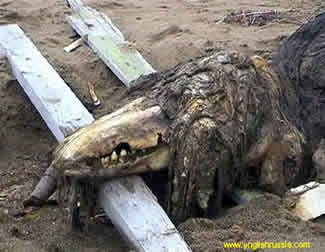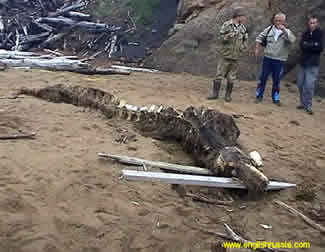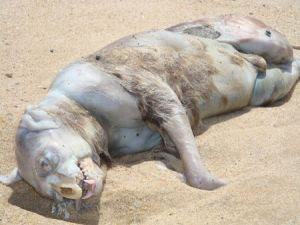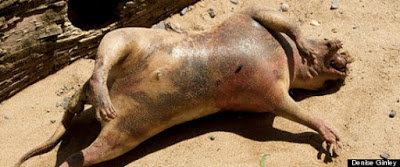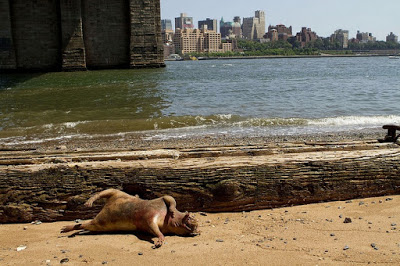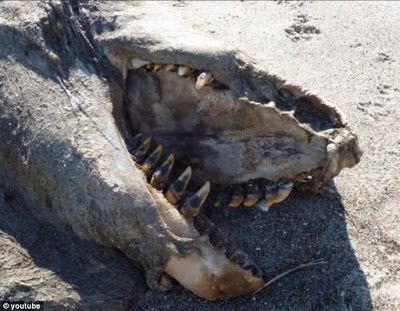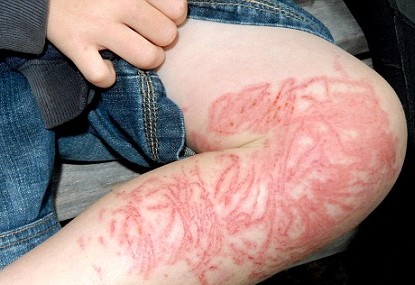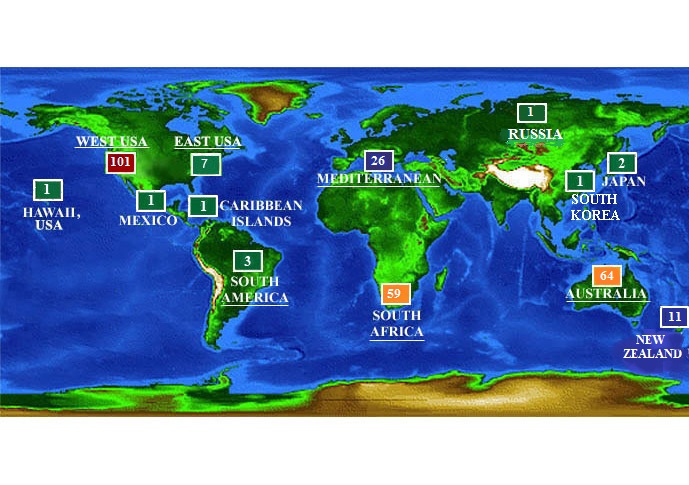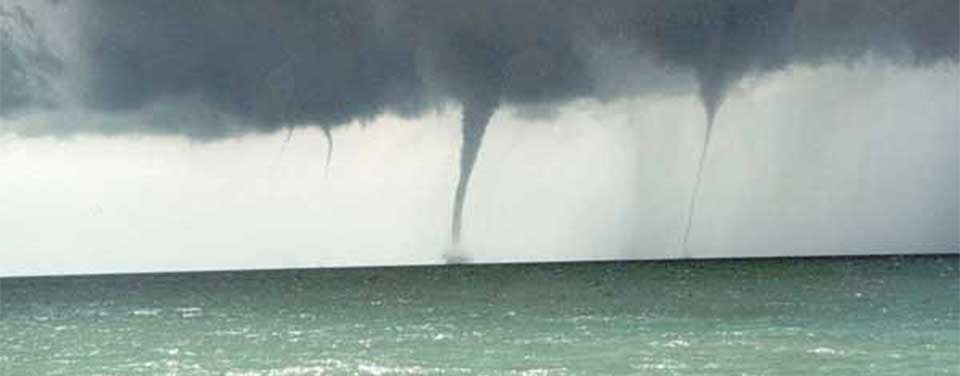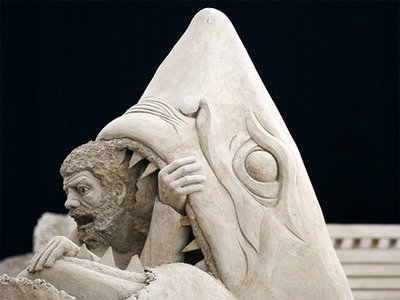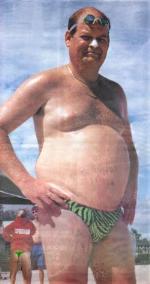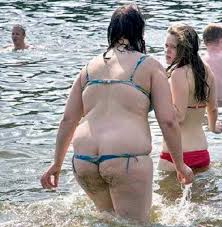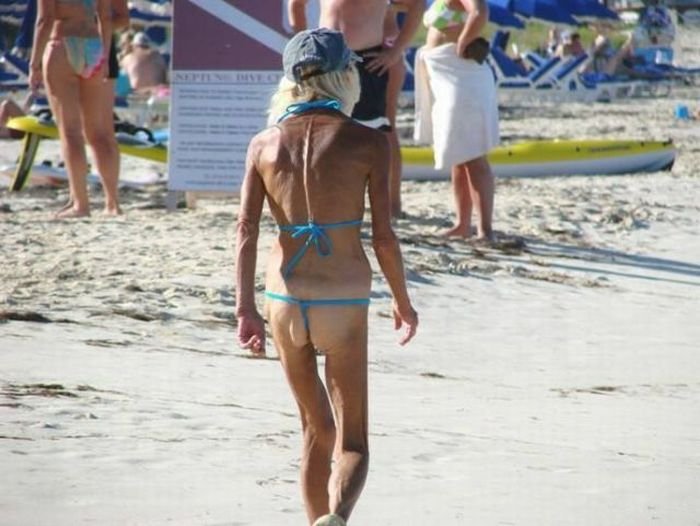| Online: | |
| Visits: | |
| Stories: |

| Story Views | |
| Now: | |
| Last Hour: | |
| Last 24 Hours: | |
| Total: | |
Dangers at the Beach!
In 1954 in England a “monster” was found that came to be called the Canvey Island Monster. ”The 1953 specimen was described as being 76cm (2.4ft) long with thick reddish brown skin, bulging eyes and gills. It was also described as having hind legs with five-toed horseshoe-shaped feet with concave arches – which appeared to be suited for bipedal locomotion – but no forelimbs. Its remains were cremated after a cursory inspection by zoologists who said that it posed no danger to the public. The 1954 specimen was described as being similar to the first but much larger, being 120cm (3.9 ft) long and weighing approximately 11.3kg (25lb). It was sufficiently fresh for its eyes, nostrils and teeth to be studied though no official explanation was given at the time as to what it was or what happened to the carcass.”
In 2008, something washed ashore in near Montauk, NY that came to be known as the “Montauk Monster.” Many believed it was the result of animal experiments on Plum Island nearby where the government did animal testing. Ultimately, a naturalist pointed out that it very much did appear to be a racoon without its fur and decomposing.
The Brooklyn Bridge Monster of 2012 (above) was thought to be related to the Montauk Monster. It washed up under the Brooklyn Bridge. This one was explained by one “expert” as a dog that washed ashore, its hair having slipped of its body and being bloated. Doesn't explain the claw or beak.
What I don't understand is why no one ever picks up these things and take them to a vet or someone?
This 30-foot creature washed up on the shores in New Zealand (above). This was thought to probably be an Orca whale.
That's not the only thing to fear at the beach. What about riptides (aka “undertow”)? 80% of rescues on the sea are due to riptides.
SOURCE: It is important for people to learn how to spot rips because it can literally be a matter of life and death; even expert swimmers can be nearly helpless in these powerful currents. Rips are sometimes referred to as the “drowning machine” because of their almost mechanical ability to tire swimmers, causing fatigue and ultimately death. The first thing I do upon arriving at a beach is to scan the surf from the highest point possible. Also, I consult with lifeguards on surf conditions and especially regarding the presence and location of any rip currents. Rips do not always appear in the same spot every time, but can change position. More than one rip may be present at the same beach on the same day. I always look for a seaward flow of debris or entrained sediment. In rip currents these materials generally move at right angles to the shoreline. Where the rip crosses the surf zone, the line of breakers may be interrupted or transformed into small, choppy waves. Also, the water contained in the rip often looks murky or foamy. Rip currents moving through relatively calm, regular surf of big Pacific swells, such as along the Southern California coast, are easily detected. By contrast, these deadly currents are much harder to spot when the sea is rough and conditions are windy.
What To Do—if caught in a rip current:
»Don’t panic, which wastes your energy and keeps you from thinking clearly.
»Don’t attempt to swim against the current directly back to shore.
»Swim parallel to shore until you are out of the current as the offshore flow is restricted to the narrow rip neck.
»Float calmly out with the rip if you cannot break out by swimming perpendicular to the current. When it subsides, just beyond the surf zone, swim diagonally back to shore.
Have fun at the beach this summer, but remember it is also a force of nature to be respected. Just when you thought it was safe to go into the water… there's Jaws….
Source: http://www.ghosthuntingtheories.com/2015/05/dangers-at-beach.html





